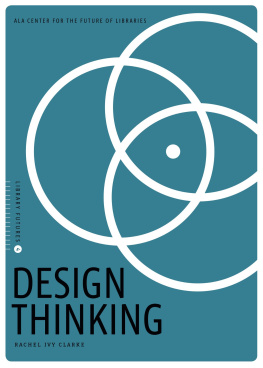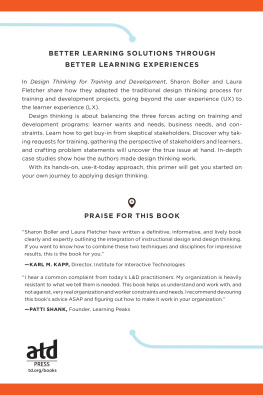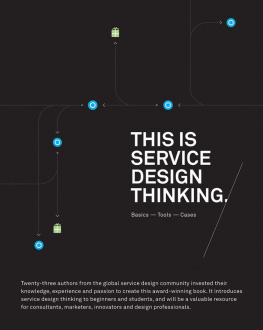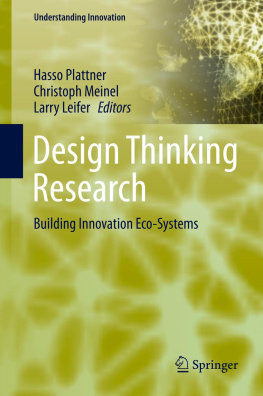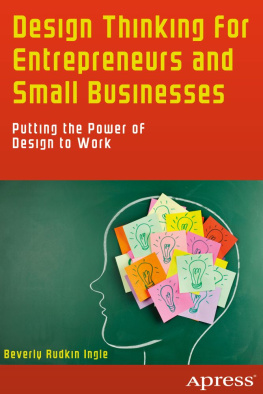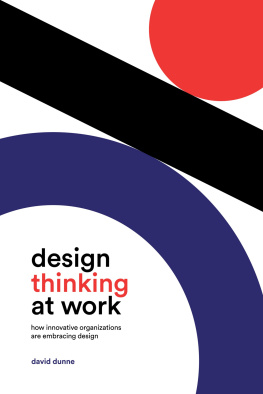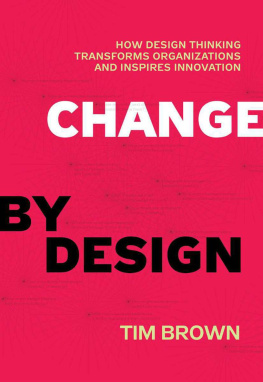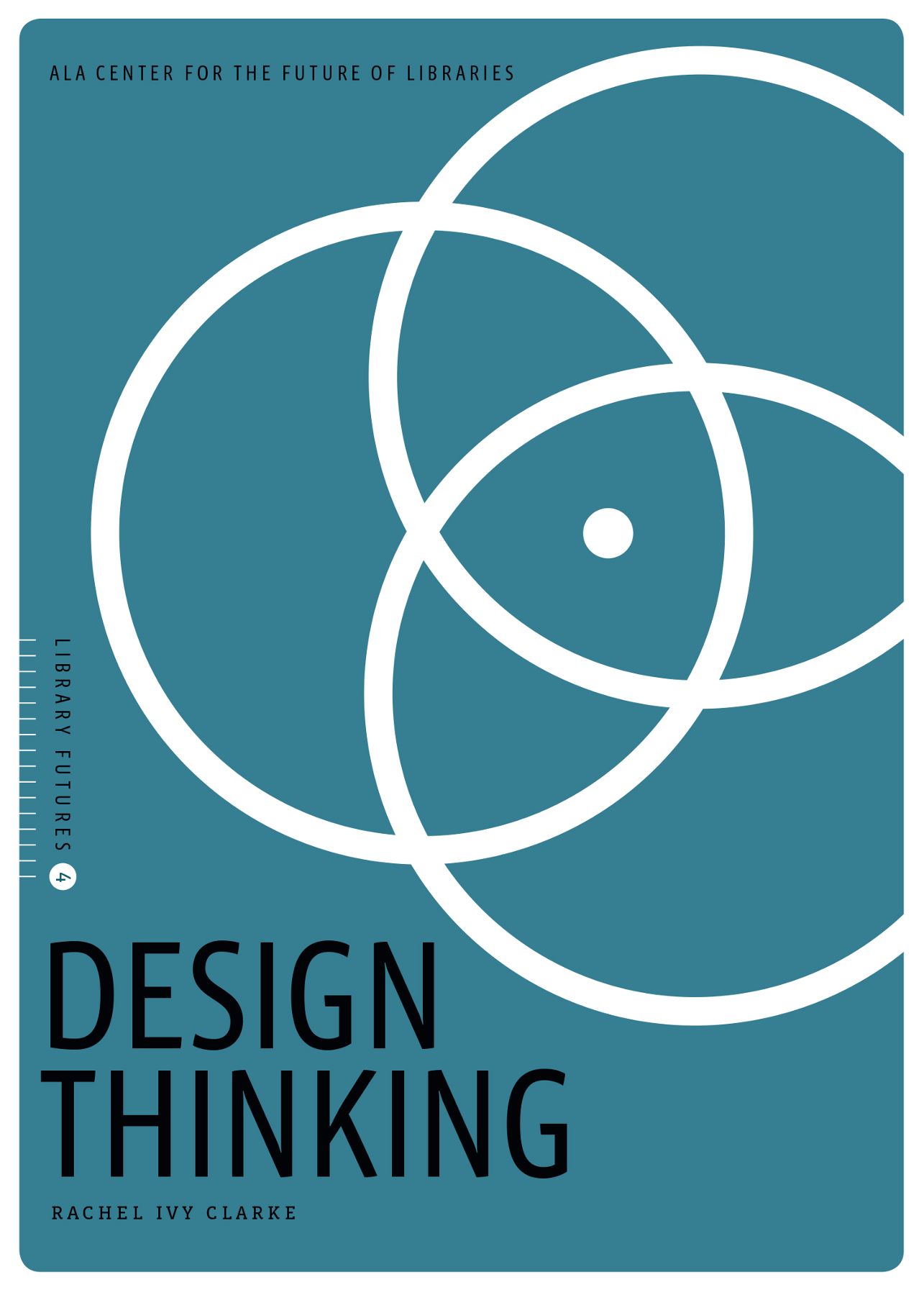
BOOKS IN THE LIBRARY FUTURES SERIES
Resilience, by Rebekkah Smith Aldrich
Anonymity, by Alison Macrina and Talya Cooper
Blockchain, edited by Sandra Hirsh and Susan Alman
Design Thinking, by Rachel Ivy Clarke
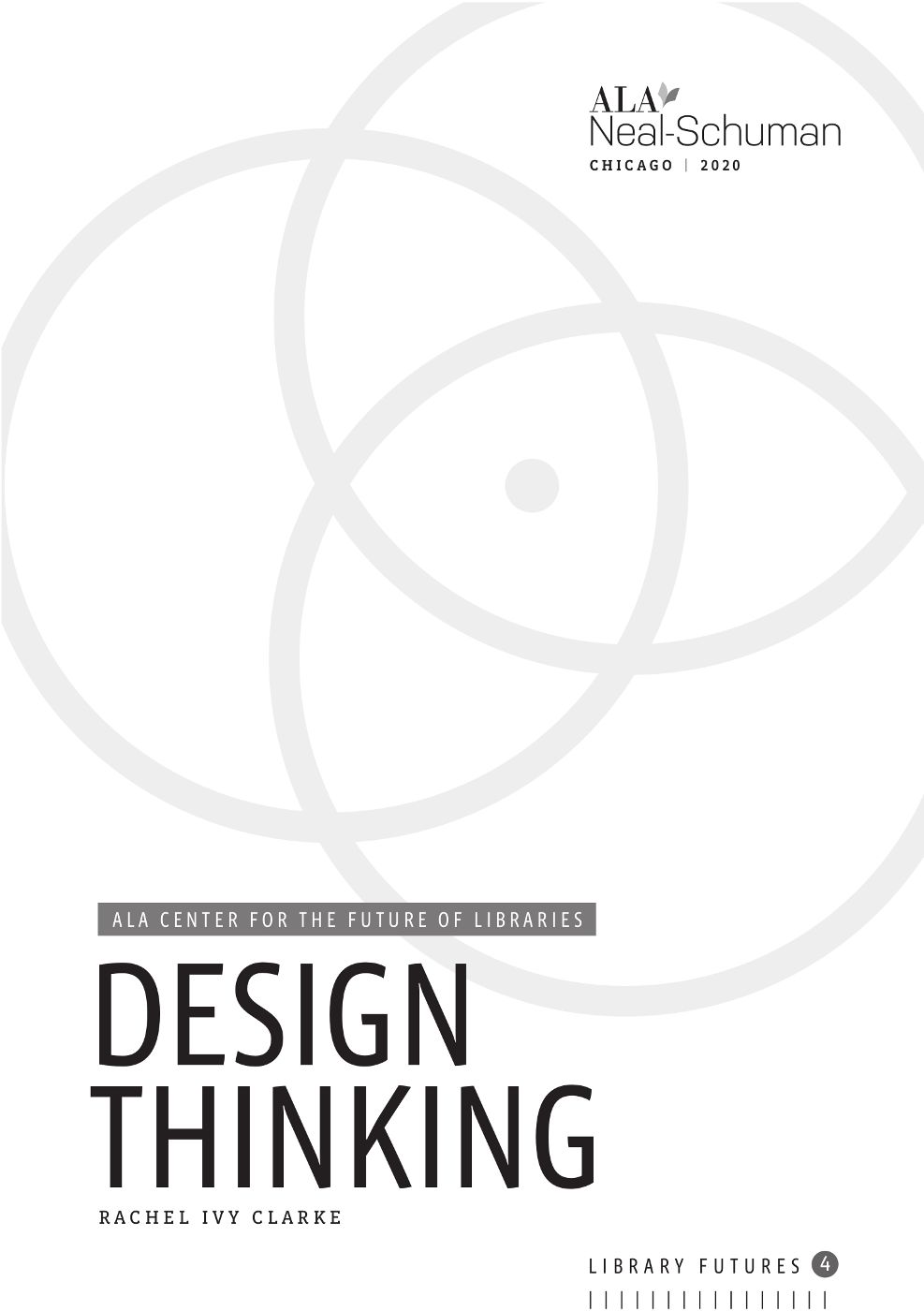
RACHEL IVY CLARKE is an assistant professor at Syracuse Universitys School of Information Studies. Her research focuses on the application of design methodologies and epistemologies to librarianship in order to facilitate the systematic, purposeful design of library services and library education. Her current projects include the IMLS-funded Designing Future Library Leaders project, which is investigating the integration of design methods and principles in graduate-level library education, and the OCLC/ALISE-funded project The Critical Catalog, which draws on critical design methodology to provoke the exploration of diverse library reading materials. Clarke holds a BA in creative writing from California State University, Long Beach, an MLIS from San Jose State University, and a PhD from the University of Washington. Her dissertation, which argues that the field of librarianship is more appropriately viewed as a design field rather than a scientific one, received the 2017 iSchools dissertation award and the 2018 ALISE/Eugene Garfield dissertation award.
2020 by the American Library Association
Extensive effort has gone into ensuring the reliability of the information in this book; however, the publisher makes no warranty, express or implied, with respect to the material contained herein.
ISBNs
978-0-8389-1792-3 (paper)
978-0-8389-4687-9 (ePub)
978-0-8389-4688-6 (PDF)
978-0-8389-4689-3 (Kindle)
Library of Congress Control Number: 2019040310
Cover design by Kimberly Thornton.
ALA Neal-Schuman purchases fund advocacy, awareness, and accreditation programs for library professionals worldwide.
Contents
BY MIGUEL A. FIGUEROA
Center for the Future of Libraries
American Library Association
WHAT IF OUR DISCIPLINE MADE THE SHIFT FROM A SCIENCE approach (organizing our professional knowledge in the form of testable explanations and predictions about the world) toward a design approach (identifying problems and addressing them with human-centered solutions)? It is a subtle shift, but in many ways it is reflected in the ways that more and more of our organizations are moving, engaging with their communities, testing solutions, involving users in the evaluation of those solutions, and readapting to the greatest purpose and outcome for the information needed.
For the past several years, Dr. Rachel Ivy Clarke has been at the forefront of reimagining a library profession focused on design. Her work has shown how library leaders, past and present, have leveraged the tools of design. She has advocated for a more deliberate use of design as critical to advancing the profession, especially at a time when the artificial barriers and hierarchies between our institutions and communities are vanishing. In Design Thinking, Clarke succinctly demonstrates why libraries futures should be both curious about and involved with the worlds fascination with design.
Fighting off the idea that design thinking is just the latest buzz word in startup culture or education, Clarke grounds her approach in a recognition that design thinking is a way and process of thinking that has been used throughout history, both in and out of libraries, as part of societys and cultures evolution. What has changed since the 1960s and has become more apparent in the last decade is the formalization of and focus on design thinking as a process that can be practiced, applied, and adapted across sectors. Through this progression, design thinking has become a popular tool for thinking and doing that is oriented toward human-centered problem solving. As Clarke summarizes, this process inevitably includes some forms of empathetic discovery, problem definition, idea generation, creation, and then evaluation, which can cycle problem solvers back into any one of the previous steps.
How does this process translate into librarianship? Here again, in Design Thinking from the Field, Clarke makes the case that our profession has evolved because library staffintentionally or instinctivelyleveraged a process like design thinking to better meet the needs of communities. From the creation of Pooles Index in the mid-1800s, to the introduction of the book wagon and modern outreach services in the early 1900s, to the creation and popularization of tough topics handouts in just this past decade, library workers have designed solutions for information problems. As design thinking has been formalized and entered the mainstream, more libraries have integrated the process into their designs of physical spaces, signage, and wayfinding; their outreach to specific populations; and even their improvements of the library catalog.
How do we move from the occasional integration of design to realizing more intentional roles as information and library designers? In For the Future, Clarke encourages readers to pursue three pathsunderstanding and applying elements from the larger context of design, moving from human-centered to values-centered design, and including design explicitly in library education and in workplace cultures. She encourages libraries to go further with design, integrating critique and reflection as tools to maintain our responsibility to the communities that we serve. Looking at our profession (distinct from a trade or industry), Clarke recognizes that library design cannot simply be responsive to the passing popular wants of our communitiesit must embrace our more timeless commitments to values. By bringing broader elements of design and making into our professional values, we make design more of our own. That acknowledgement and ownership of design will be solidified by integrating design principles into educational preparation for professionals and purposeful changes to our organizations (libraries, systems, agencies, and associations) to build solutions for the problems we all face.
Design thinking echoes many of the movements happening in libraries. And while it is a loaded term for some people, design thinking, as Clarke presents it here, is an approach that we can all appreciate and learn from.
THE PHRASE DESIGN THINKING MAY SEEM LIKE A new buzzword thats all the rage in our current world. But despite recent popular applications, design thinking is not a new concept: it is a way of thinking as old as humans themselves. For as long as human beings have been making things, they have been designing. Everything from the earliest stone axes to todays iPhones are products of design; that is, a process of creation with the intent of solving problems.
Those who only see the end results of this processthe axe or the iPhonemay take these acts of creation for granted. Since we dont often see the work that goes into designing these products, we may think the design process is simple, easy, or is even a magical feat that only people born with certain talents can pull off. But just because we dont see the work of designing doesnt mean its not there. All skilled professionals make their work look easy, from a basketball player gracefully sinking a basket to an actor seamlessly transitioning into an entirely different character. Even librarians make professional services like database-searching and readers advisory seem like magic to people not trained in those skills. Design also requires the same amount of hard work, training, and practice to achieve a level of proficiency where the results appear magical.
Next page
